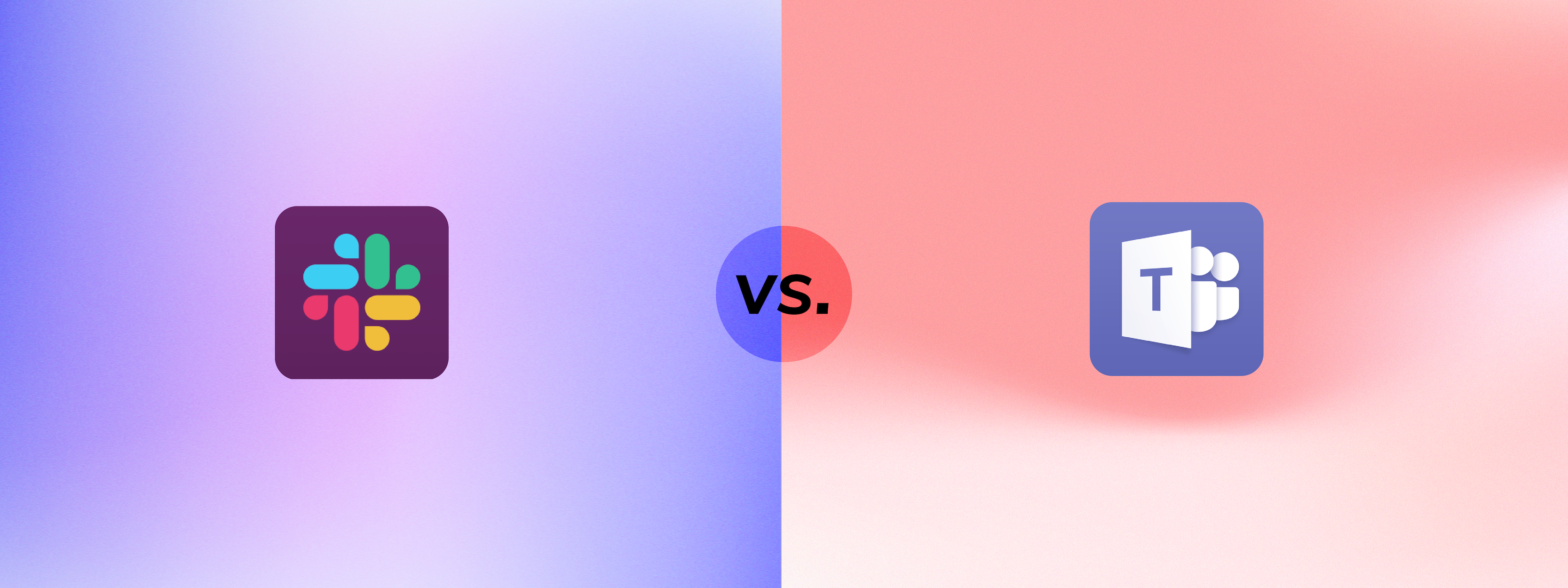TLDR: they’re both bad, but it might be interesting to know what each one does
“Dog shit vs horse manure – which tastes better on a sandwich?”
Definitely horse manure since they’re herbavores and it’s mostly grass. You can thank George Castansa for that knowledge.
Dogs literally eat their own vomit. I’ll take a horse shit sandwich any dy of the week.
They also seem to think cat poop is a delicacy.
You got the ma, and the nure. Doesn’t sound so bad!
yes
Security aside (because that’s my employers problem), Teams is just aweful.
The UX is all over the place, likely because of the feature creep forcing a lot of dev departments to collaborate.
It just does too much. I don’t need an all on one solution, I need a communication tool.
The chat looks like WhatsApp, not like a proper professional comms channel. Maybe there’s a setting buried somewhere.
The meetings are more miss than hit. For every working meeting I have 5 meetings where something doesn’t work. Multiple retries to join; or it picks the wrong mic, speaker and/or camera; or chat within the meeting doesn’t work for some participants so they can’t share or see links; video streams being disconnected and reconnected depending on who currently speaks (which looks extremels annoying); and probably a ton more I zoned out).
Slack on the other hand mostly just works. As a chat tool. What it is supposed to be.
I had the displeasure of managing Teams for an IT client of mine, and to say it’s a clusterfuck is putting it charitably.
It is almost impossible to change the user. A basic, rudimentary function that should be a simple matter of signing out and signing back in. Nope, doesn’t work. You have to reinstall Teams to get that working.
Oh, and reinstalling is an ordeal itself. That usually doesn’t work, either. You have to manually delete the installation directory and app data cache, and for whatever dumbshit reason, it doesn’t install to program files, it installs to some obscure directory in the user profile.
God help you if you rename a user. It retains the old user details until you sign out.
Trying to share a link to join a team never works.
These are just off the top of my head and I don’t want to continue because it’s stressing me out.
Fuck Teams.
As much as a lot of that hate it warranted, I’d say the install location isn’t so much a Teams issue as it is a Windows issue and how it handles user-level vs system-level installs. Obviously still a Microsoft problem, but important to note.
Obviously still a Microsoft problem, but important to note
You’d think Microsoft software would work optimally on a Microsoft operating system, but, quite often, it operates in the shittiest, kludgiest ways.
The UX is all over the place, likely because of the feature creep forcing a lot of dev departments to collaborate.
“I created a spreadsheet with that info.”
“where is it?”
“It’s in my ‘recently used files’ in teams…”
“Yes but where can I share that document?”
“I think it’s in my OneDrive? I don’t see it there.”
“Let me check Sharepoint - I don’t see it there…”
“I’ll just email you a screenshot.”
Google Meet is the gold standard of meeting software in terms of UI/UX in my opinion. The layout is consistent and reliable.
For extremely large meetings (a few hundred people), Zoom might still have the edge. I am always surprised how well they handle that. Even if it’s not moderated and anyone is allowed to talk at any time. They have some very good algorithms in regards to video stream routing.
Meet got a lot better in that regard too, however. Before COVID Meet wasn’t really usable for more than a dozen people (IMO). Now it can also easily handle one or two hundred.
And yes, for the quick team meeting or a short chat it’s just so convenient. Share link and go. It remembers the settings from last time and you are ready. The only thing that still confuses the shit out of me is that when more than a specific amount of participants are in the meeting, new members join muted. If I am late to meetings I tend to miss that detail and then need a few seconds to realize that no one hears me. I would probably prefer if it was consistent (you always join muted or you never join muted … or you actively have to decide or something).
The host has the ability to make all attendees attend mute.
But it isn’t a consistent feature yes. I am guessing due to different preferences for many.
Microsoft are incredibly talented… at buying software that’s great and then ruining it! Live Comms Server was bought then they bought Skype, both were good, and they slowly but surely turned into the Shambles known as Teams.
They have quite the record of pulling off this stunt.
Teams does too much but slack is just a chat app? That’s just not even close to true. Slack does way more than teams. Which is why I wish my company would drop teams so I don’t have two messaging apps to worry about.
I do have to say I almost never have an issue with teams calls. I’m pretty sure most IT departments just do a shit job of configuring it because if it was the app, it would happen to everyone. 99% of my teams calls work without any issues, including big meetings with dozens of people.
Yeah at some point you could just use discord wich actually works…
Slack makes it easy for employers to read your private messages, but Microsoft Teams takes employee surveillance to the next level. Teams offers employers easy access to stats about what you’re doing on the platform via its user activity reports dashboard. The dashboard shows how much time you spend messaging others, participating in calls and even how much you’re screen-sharing. Invasive!
You should be wary of both Slack and Microsoft Teams but Teams is teeming with privacy worries for the average employee. Work wisely.
Does it matter in a work setting? Not like you get to choose what your company uses, and furthermore, it’s work stuff, not going to have any personal stuff on there anyway.
The relevant bit is probably just reiterating that your employer can see what you do on work related things, so continue to behave like you are at work
If you CAN influence the decision of what to use, then I guess it might be helpful to know the specifics
I agree with this. I work IT at my job and the amount of things corporate IT can see employees do on our computers and internet is quite crazy.
Right, I should’ve said that “personal stuff should not be on there”. I forgot how some people somehow don’t get the distinction between work and personal assets.
Removed by mod
Exactly, assume your employer can see everything you do on the company network, software, and devices. If your employer regularly checks on employees this way (that is excepting extraordinary circumstances) and uses it against employees this is an indication that they are a bad employer and you should find one that trusts their employees unless proven otherwise.
Doesn’t matter really since I don’t get to decide which one my work uses. I assume that’s true for most people who aren’t bosses themselves.
is this a joke
Matrix or Jitsi when it comes to privacy. Microsoft vs. Slack is the totally wrong approach when it comes to privacy.
Why would your employer care about your privacy at work?
they should, especially as a smaller business, as data leaks could run into GDPR problems. my ex-employer, for example, handled all customer data in plaintext and never delete data for people who were no longer customers. he also insisted on using non-secured channels for business related information/secrets. and zero backup systems. malware ripe for the taking lol. had one system crash and he went mental but refused to accept a backup solution. absolutely no understanding of IT and deaf to any recommendations because of fear that he’d be unable to replace me with a cheaper employee once i was done setting everything up.
three years later, three employees later, and the cheaper replacements were unable to do anything anyway and it’s all broken now. but i’m sure in his mind it’s all my fault.
so yes, they don’t, either due to incompetence or to cut corners. but they definitely should.
I honestly don’t know why any medium sized company would use a proprietary chat service.
Your company should want private data on a service they control.
Because they care more about reliability, accessibility, and the ecosystem (don’t discount the many many slack bots). Privacy is on the bottom of their list of concerns.
Neither offers something like slack, though. Is that true? with channels and all that stuff
Jitsi isn’t really a Slack alternative. Instead, it’s more of a Zoom alternative.
However, Matrix is a great Slack alternative. Slack channels are similar to Matrix rooms, which can be organized into Matrix spaces. Matrix supports threads, replies, attachments, and formatted text like markdown or HTML. Slack’s snippet functionality is not as great on Matrix and Slack’s integrations with other services are likely easier to setup. There is likely a bunch of other pros/cons to Slack/Matrix depending on your use cases. The caveat is that you’ll need to use a Matrix client and Matrix homeserver that support the Matrix functionality that you want.
This is where I get confused, looking at Matrix. I see that it’s used for a bunch of stuff and there are various clients in their ecosystem. But say you want to create something like Slack for a group of people numbering @12, what exactly do you need to pick, you know? Is there simple guide somewhere for that?
Edit: it’s a little clearer here https://matrix.org/try-matrix/
You just use Element, the official client. It isn’t an exact Slack clone but it’s absolutely great.
Matrix has channels. Or what are you referring to? I did nor use slack since many years
Channels are kind of like specialized convos. Like a community or subreddit, in a way. I see that matrix has chat, just didn’t see anything about what other functionality comes with. Maybe I missed it on matrix.org
Yes matrix has that, rooms and also spaces
Thank you. I’m skimming through the site rn. Not quite clear on the steps to create an “instance” for a group
e.g., do you first get Element?
Edit: found this page: https://matrix.org/try-matrix/ that makes it a little clearer. If creating a secure forum is important for a team, do you have to create your own server?
Own server is always the most private, but you can use any instance and should be fine. Its e2ee, so you should have a way better setup as with slack or Microsoft
If you want something that’s more like Slack you should check out Mattermost. It’s got a few other features like a Notion-like project management and a checklist feature. But like Matrix/Element it’s open source and can be self hosted if you don’t want to use their cloud product.
+1 to Mattermost. It’s like having an open source Slack which can be self-hosted. There are a number of companies that use it including NASA and Samsung.
The thing with teams is that they had it pretty much nailed ~2 years ago, but decided to keep going.
Cats Vs Dogs — Which one shits Better Turds For Your Health & Nutrition? [Joe Rogan]
I switched my team over to a matrix/element chat. All the main players are bad
Did you create your own server?
Pretty happy with matrix, we’re using it for the Kbin development chats. Reminds me of a more privacy focused discord
We use jitsi at work. Happy so far
Teams is a slow, buggy, annoying pile of shit, just like all microshit software
Indeed, but it’s included with Office 365 and there’s a handy join button within Outlook that keeps me coming back for more.
All this activity monitoring and they’re still forcing employees back into the office.
Usage statistics are not surprising. It’s a business tool. What am I missing?
None, use zulip or matrix
deleted by creator
Yeah this article is kind of pointless for me since I have no say in the matter
Even if your organization is ok with it, other companies might not be. Eventually you’ll have to communicate with people from other companies, which means you can’t avoid Teams forever.
You can email other companies. Chat tools are only used internally anyway.
Removed by mod
For the most part, that’s true. However, there are also some situations when I’ve had to set up a new team that includes members from outside the company. We use those teams for messages, announcement posts and meetings. Normally, those teams involve universities, contractors or consultants.
deleted by creator
Teams lets you federate with other teams’ instances
I use zulip at work. Million times better.



















